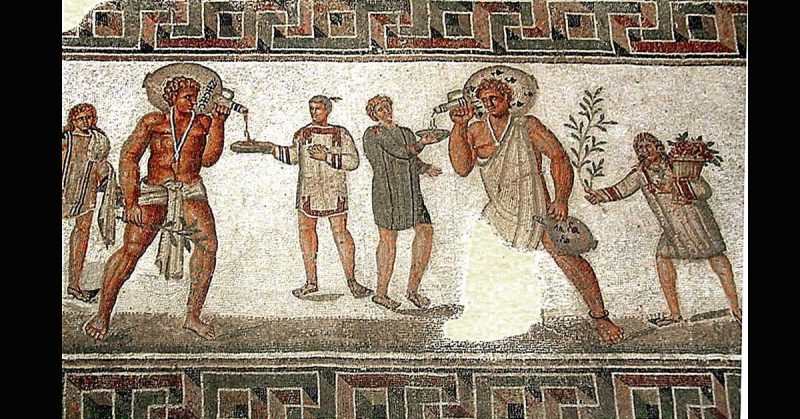War History Online presents this Guest Article from Joseph M. Durante
In the ancient worlds of the Greek City States and the Roman Republic, slavery was a driving force for the economy in order to maintain their society. Ancient Greece was divided into different bodied city-states each governed by their own people on a much smaller scale and in ancient Rome they had constructed a governing body for all the lands they had conquered which massed to become one of the largest empires in history. In the economy of ancient Greece and ancient Rome, chattel slavery was the model used in order to solidify the description of a slave. Slaves in ancient Athens and Rome were easily found.
The slaves who were being sold can be found on the docks at a port or within the markets of the city of Rome. In ancient Athens, everybody owned a slave. The Athenians and Romans obtained slaves through wars in foreign lands for which they conquered many lands. There was a driving force, a good chance to become rich if you owned slaves.
According to Sandra Joshel, author of Slavery in the Roman World, “chattel slavery” is defined as, “individual human beings are owned as property and treated as commodities that can be used, bought and sold, willed, given or lent” for that this classified that people can now own other people. In ancient Greece chattel slavery began to arise, according to N.R.E Fisher, just after the reforms Solon introduced into Athenian law.
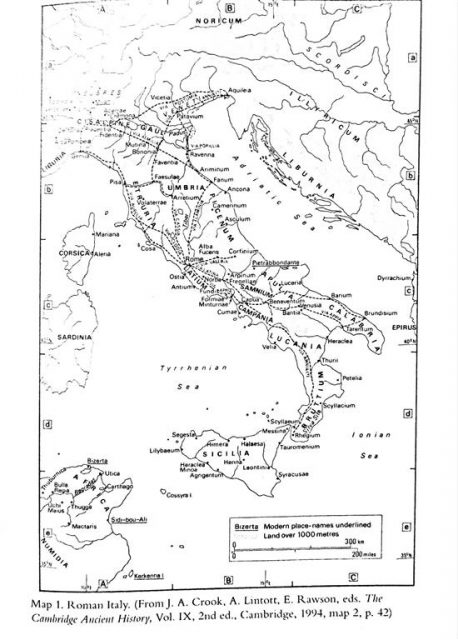
The “chattel slaves” in Athens weren’t Athenians but were, as Fisher wrote, “of non-Greek (‘barbarian’) origin.”Some doubt arises with this because we know Athenians couldn’t be enslaved by other Athenians what about other Greeks? So, we cannot say for sure that all “chattel slaves” were non-Greek but just non-Athenian. Fisher continues to write that regions just outside of Greece gave supplied regular amounts of slaves. These regions included Thrace, Scythia, Caria, Phrygia, Syria and Illyria. These slaves were from wars, captured by pirates or even in trading with the barbarian countries mentioned above.
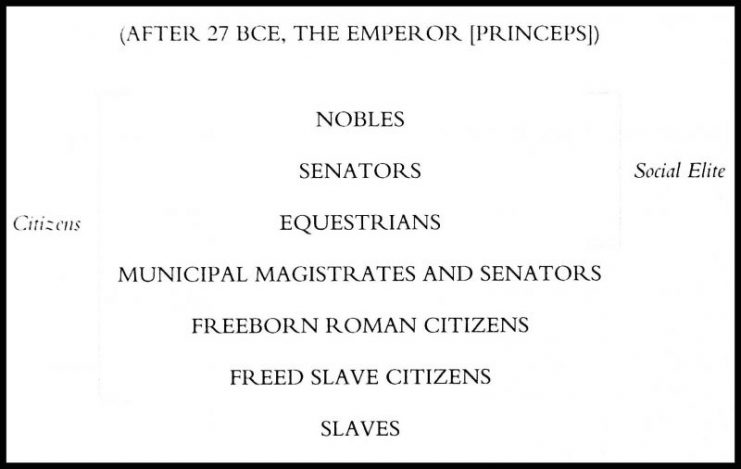
Fisher cannot give an exact number of slaves in Athens simply because the evidence doesn’t exist, but with other evidence he says that everyone in Athens owned slaves, not just the aristocracy or public ownership by the government. Fisher writes, “major sectors of the economy developed rapidly… the silver mines in the Laurion area of S. Attica produced considerable amounts of wealth,” which was worked primarily by slaves. The work in the mines was done by expendable slaves and could be easily replaced. The demand for slaves, both in the mines and for city slaves were large and so the supply was being fulfilled to meet the needs of Athenians.
The silver mining operation was in high demand of the Athenian economy. Fisher writes that the silver mines gave “major contributions to her [Athens] military and economic success,” and in response to a large amount of slaves, the Athenians placed stone towers to keep watch on possible runaway or rebelling slaves. Another example for the use of slaves was for manufacturing goods. The slaves made weapons of war, statues, knives, lamps, clothes and pots. For quarrying purposes, the cites were managed by contractors who used slave labor to mine the stone out of the quarry and then to transport them away. Even for public building, slaves provided much of the labor force. Fisher wrote that with, “detailed inscriptions recording public payments to various workers enables us to see the modes of operations,” which then can lead us to see if it was citizens, metics or slaves that were building the monumental constructions.
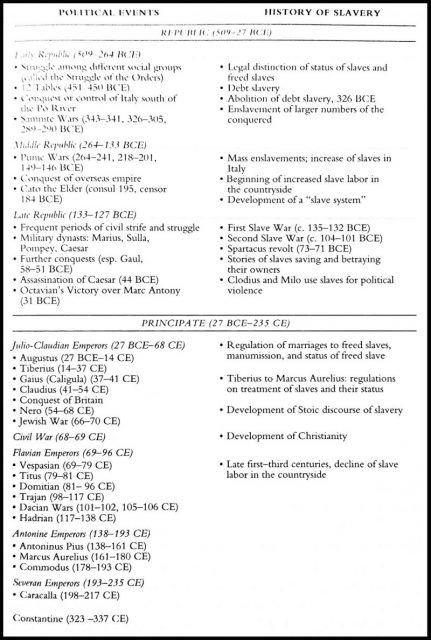
The Greek world, especially in Athens is much different than that of the Roman Republic. The Republic had conquered a large amount of land through war and conquest and war was one of the leading causes that lead to an abundance of war prisoners who then became slaves. The towns and tribes they conquered were sacked and from them, the army, or whoever was in command of the army, and the women and children would be taken as slaves. According to Joshel, the Roman slave world had a central point of chattel slavery, “the slave is fungible—exchangeable, replaceable substitutable,” giving the slave a more proprietary attribute.
The slaves that came from the wars Rome fought in was heavy. Joshel uses both Julius Caesar and Appian to describe the amount of war captives Caesar had after his war in Gaul. “In 57 BC Julius Caesar sold 53,000 of the Aduatuci into slavery,” and the total number of captives of Caesar’s Gallic campaigns between 58 and 51 BC had been put to one million (Appian, Gallic History 1.2).” These numbers alone show that the demand for slaves is high and that the Roman aristocracy and plebeians were willing to buy them. The Gallic Wars lasted about eight years and over that time Caesar conquered what would be modern France.
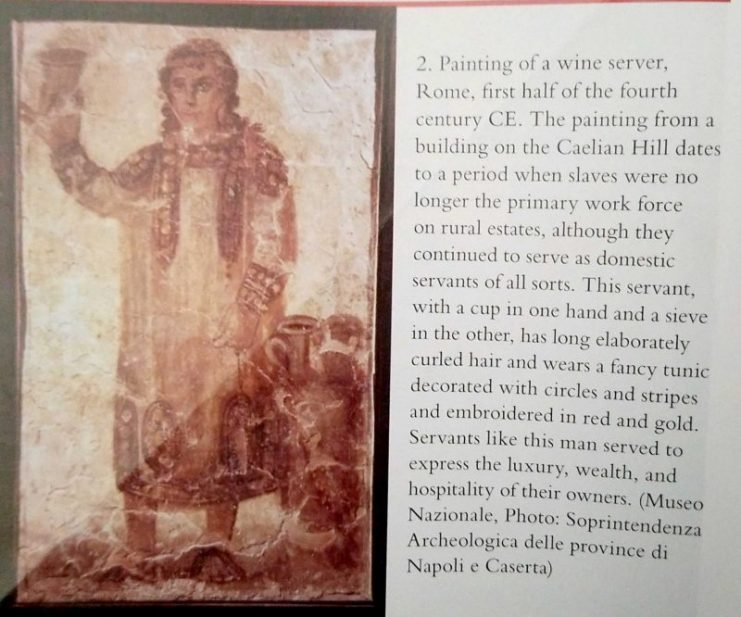
Joshel writes about the role of slaves have on the wealthier, aristocratic people of Rome. She writes, “slave labor produced most of the income of the wealthy by laboring on their farms and estates,” and that elite wealth, status, and leisure were all built on the labor and lives of slaves.” This evidence shows that the slave played a larger than just being property but was important to the noble families of Rome which directly increased their monetary gains. The slaves were free labor, although they were purchased and have to be fed, but if there was an abundance of slaves coming into the markets from foreign wars, the price for slaves were cheap. Being that the slaves were cheap to purchase, the nobles were able to buy in large quantities to work for them on their agricultural lands. This fit the laws of supply and demand very well.
In both societies, Athens and Rome, slaves held most of the labor-specific jobs. Although, some slaves can become owned by the public or some can run for a limited political office. By having slaves be the production force, slaves directly influenced both the economy of the state and of the people who owned them. Using a large slave force to construct monumental structures is almost cost-free. The labor is of purchase only, with some food expenditures but if something were to endanger the life of the slave, he/she were easily replaceable. The slave, on a smaller level, would then be required to maintain the produce of the farms owned by the aristocracy.
Author: Joseph M. Durante
Bibliography
Joshel, Sandra R. Slavery in the Roman World. New York: Cambridge University Press, 2013.
N.R.E. Fisher, Slaves in Classical Athens: Numbers, Origins and Economic Functions
All photos are provided by the author.
